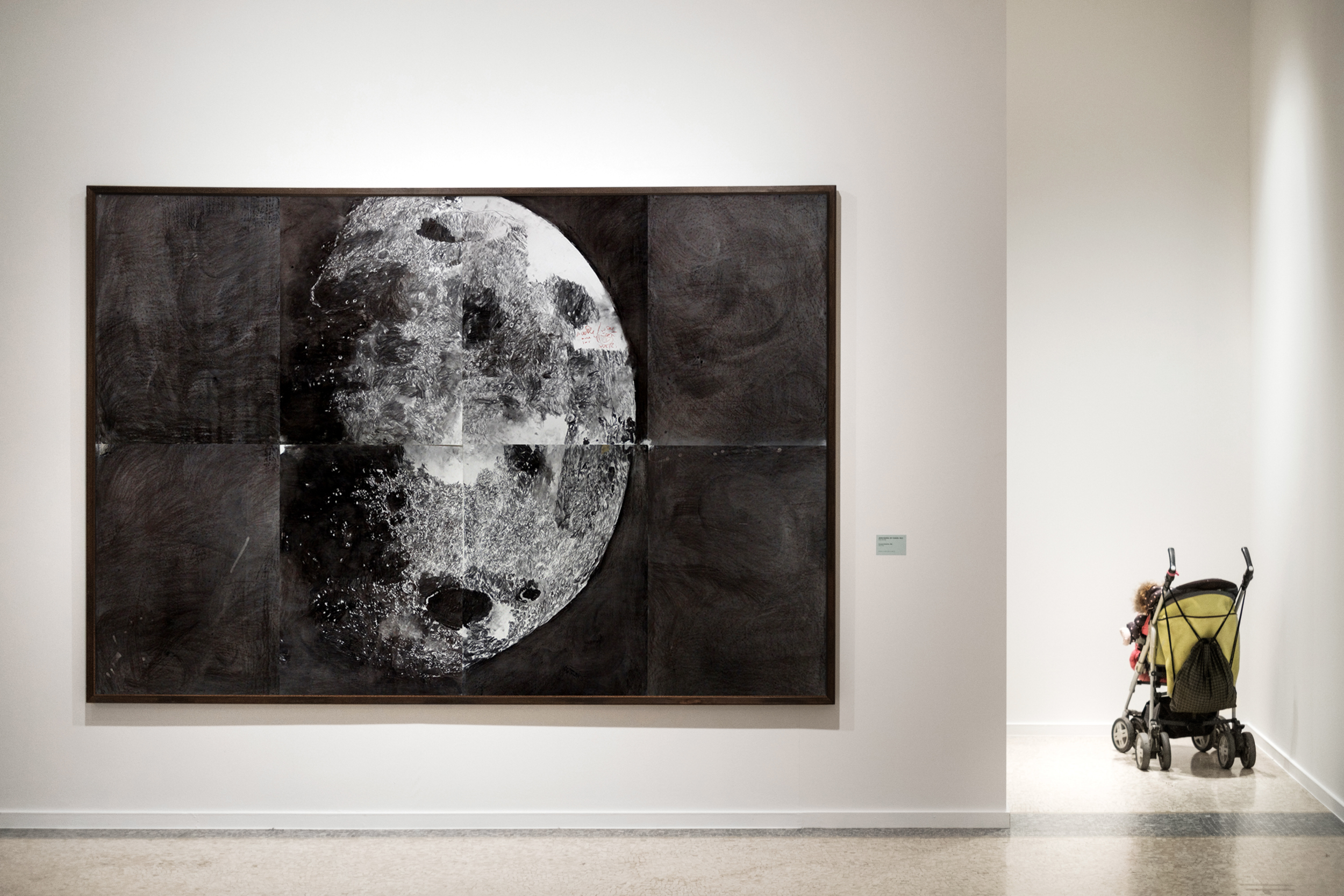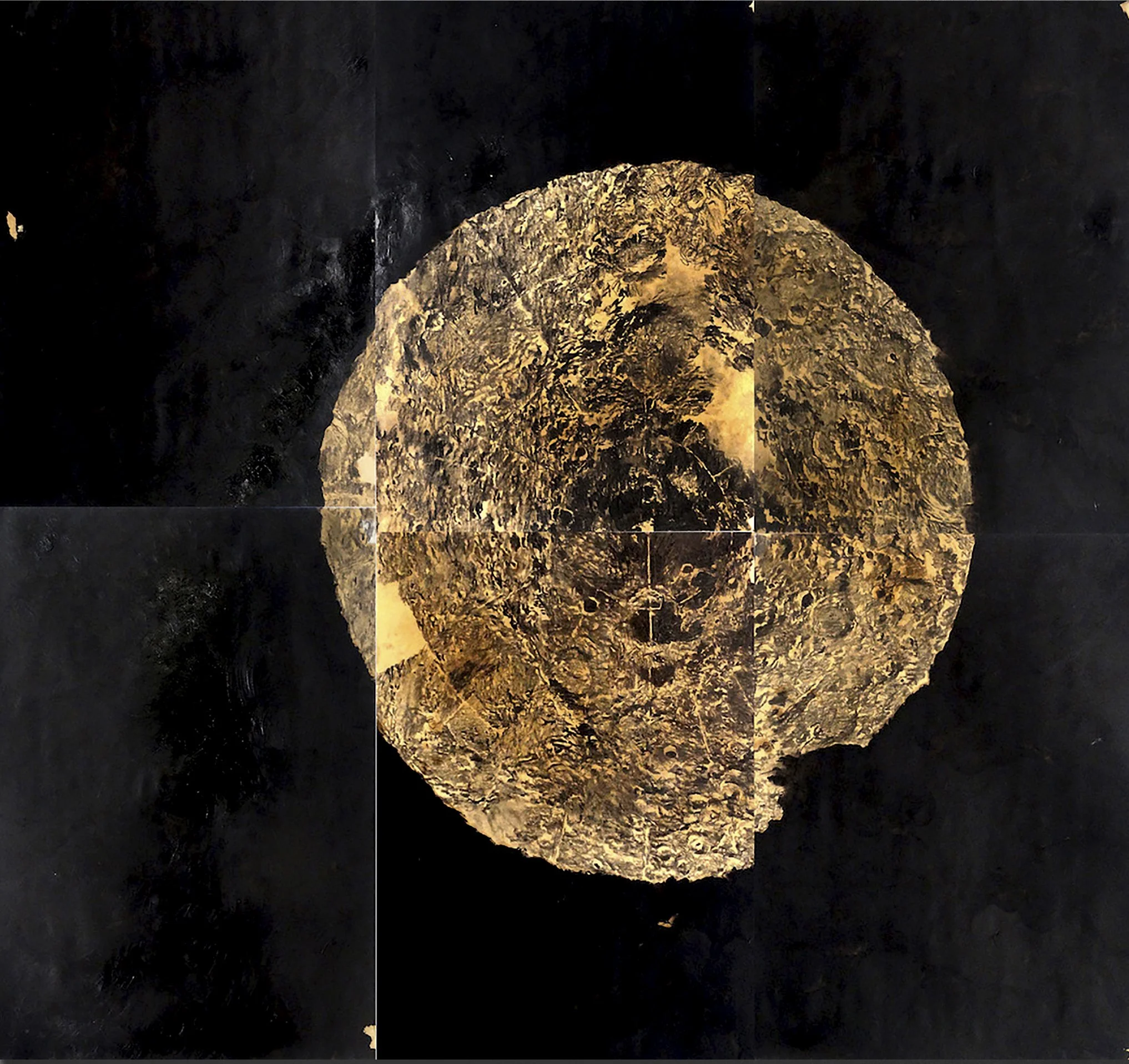Jorge da Cruz (b. 1974)
Objects and Moons – Dark Side of Our Moon – South Hemisphere, 2018
Charcoal on paper, 6 individual works, each 70 × 40 cm
© k37 studio, Bethanien Art Center, Berlin
Drawing Notes from the Far Side of the Moon
Text by Jorge da Cruz
Objects and Moons – Dark Side of Our Moon – South Hemisphere is not a single piece, but a series of six individual drawings. Each one explores a different visual and conceptual response to the Moon’s far side—a place we can’t see from Earth, but that has always intrigued me. While each drawing stands on its own, together they form a fragmented, reflective constellation. In this series, I draw from both science and imagination—letting them overlap and blur.
The fact that we never see the Moon’s far side has always fascinated me. Earth and Moon are constantly moving—spinning, orbiting—but there’s this one face we’re never shown. What we call the “dark side” of the Moon (even though it gets as much sunlight as the visible side) isn’t hidden by shadow, but by a precise orbital condition called synchronous rotation, or tidal locking.
The Moon spins on its axis at the same speed it orbits Earth—about once every 27.3 days. That’s why we always see the same side. This isn’t random; it’s the result of gravitational forces that, over millions of years, slowed the Moon’s rotation to match its orbit. Earth’s gravity pulled on the Moon, creating tidal bulges, and over time that friction locked it into this rhythm.
Even so, the Moon doesn’t stay completely still from our point of view. Because of a slight wobble called libration, we’re able to glimpse up to 59% of its surface over time—but never the full sphere. The far side remained completely unknown until 1959, when the Soviet spacecraft Luna 3 sent back the first blurry photos of that hidden terrain.
And what they revealed was unexpected. Unlike the familiar side with its wide, dark maria—those sea-like volcanic plains—the far side is rough, mountainous, heavily cratered. It looks like another world. It’s geologically different, untouched by the same volcanic history, and somehow even more mysterious.
This series is my way of drawing that mystery—not to explain it, but to hold space for it.
JC
Visible Side of the Object in Motion #2| the world creation l charcoal on paper, 2016 | 189x166cm l © k37 studio, bethanien Berlin (colect.nr00039)
Visible Side of the Object in Motion | the world creation l charcoal on paper, 2016 | 189x166cm l © k37 studio, bethanien Berlin (colect.nr00039)
Object dark3- Charcoal on paper 140x280cm l © k37 studio, bethanienArtCenter Berlin Apri 2019


